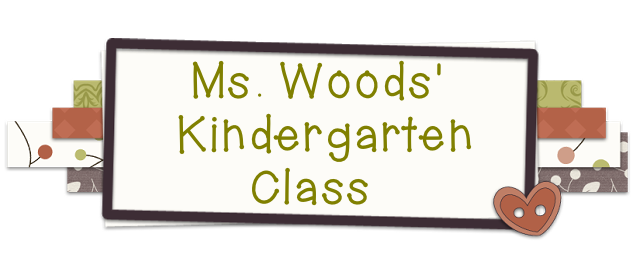Kindergarten teachers do their best to create what's called a "language-rich environment," since the ability to read and write first begins with language. This means we try to provide as many opportunities as possible for children to explore language through environmental print, conversations, and texts. In our classroom, I do this through formal lessons on reading, writing, and phonics, as well as exploratory opportunities that kids can take part in organically. Here are some examples of literacy-rich activities that we have available in our classroom:

Each morning we start out with a morning message which we read chorally (together). The message repeats the same thing each day, with only a few changes (the day of the week, what special class we have, etc.). Predictable text is a great way for students to learn early literacy skills, including skills such as reading from left to right, moving down to the next line when you get to the end of the first one, touching under each word as you read, and using the first letter to figure out a word you don't know. I also ask a different question in the morning message each week, which we answer together. The question usually pertains to a math or literacy skill, such as the one above, which says "Do you know any words that start with L?"

We use science journals on most Forest Fridays, as well as during other science activities, to record our observations through drawings and words. Students learn quickly that they can convey information through print, the way scientists do.
I have several rotating centers that students can use during literacy and choice time, such as the magnetic letters and name cards to the left.
Each day Mrs. Thompson and I meet with students in small groups for reading lessons, called guided reading. This allows us to target specific skills that students need to advance their reading abilities. These lessons are often accompanied by writing lessons, since reading and writing are interwoven.
This is another example of a literacy center that helps develop phonics skills (specifically letter identification), as well as fine motor skills, since the object of the activity is to pick up the marble with the tweezers and put it on the correct letter. Fine motor skills help students with literacy skills such as writing and drawing.
Another choice during phonics time is to match letter cards with an alphabet mat. These choices rotate throughout the year. Soon students will be doing word sorts that match their spelling abilities during this time as well.
Another choice center, using foam shapes to make letters. The physical act of forming the letters helps students recognize them in their reading and call them to mind during writing.
We also have a time called Writers Workshop three days per week, in which students write and draw stories based on a loose theme (such as "stories that happened to you" or "All About books"). This is a picture of our very first writing project, which involved depicting the farm scene from our field trip, labeling the contents, and writing a sentence to go with it. After this initial activity, kids were reading to start writing their own stories.
As always, let me know if you have any questions about learning in our class! I realize that I've been neglecting the subject of math, so I promise to post pictures about it soon!


















































































